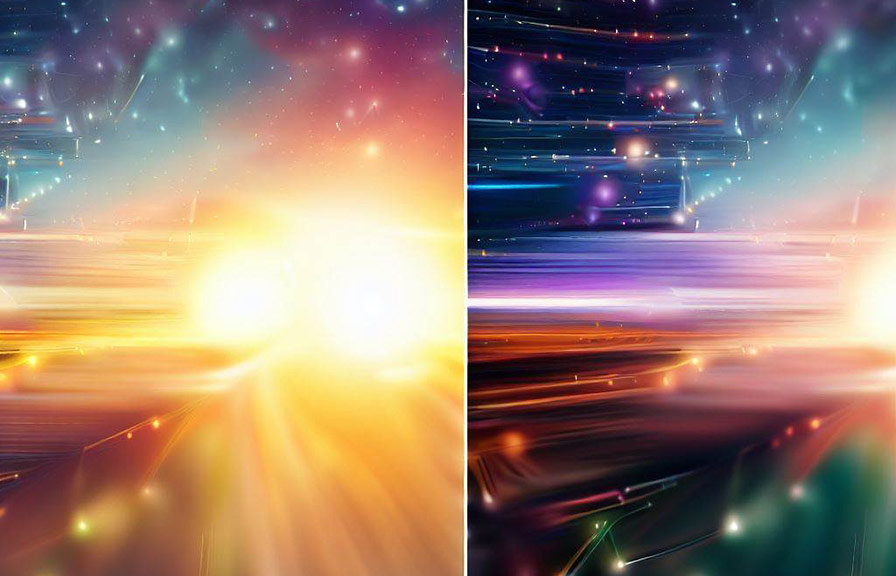Did you know that nvidia's gan (generative adversarial network) technology can create hyper-realistic images of objects and scenes that never existed? this is just one example of how artificial intelligence (ai) has revolutionized the world of photo editing in recent years.
Thanks to ai, photo editing workflows have become more efficient, accurate, and intuitive, offering mind-blowing results that were once unimaginable.

In the post, we'll dive deep into the power of ai in photo editing, exploring the latest breakthroughs, applications, and innovations in this fast-paced field.
Ai-powered editing tools: a new era of creativity
Ai has revolutionized photo editing by automating mundane tasks and enabling new creative possibilities. as a result, professional photographers and enthusiasts alike have embraced ai-based tools to streamline their workflows and achieve results that were once reserved for experts.
1. automated object removal and replacement
Removing unwanted elements from an image used to be a painstaking process, often involving hours of careful manual work. today, ai-powered tools like adobe's content-aware fill make it possible to remove objects or distractions with just a few clicks.
These tools analyze the surrounding area, intelligently filling in gaps with appropriate textures, colors, and patterns.
2. image upscaling and enhancement
Ai algorithms have made it possible to enhance low-resolution images without compromising on quality. tools like topaz gigapixel ai and let's enhance leverage machine learning to analyze and upscale images, adding detail and sharpness that wasn't present in the original.
This is particularly useful for enlarging old or low-quality photos for printing or display on high-resolution screens.
3. style transfer and artistic effects
Ai has also made it easy to apply artistic styles to images, turning ordinary snapshots into stunning works of art. applications such as deepart and prisma use neural networks to analyze famous paintings and apply their distinctive styles to user-uploaded images.
This allows anyone to create unique, eye-catching images that resemble the work of famous artists like van gogh or picasso.
4. automatic photo enhancements
Ai-powered tools can now analyze an image's composition, lighting, and color balance, making intelligent adjustments to improve overall quality. applications like luminar ai and photolemur offer one-click solutions for enhancing images, taking the guesswork out of photo editing and providing consistently great results.
Transforming the professional landscape
Ai is not only changing how hobbyists edit photos, but it's also having a significant impact on the professional world. from automating time-consuming tasks to offering new creative avenues, ai has become an essential tool for many photographers, graphic designers, and digital artists.
1. accelerating workflows
Ai-powered tools have helped professionals save time and effort by automating repetitive tasks. for instance, tools like adobe's sensei technology can automatically identify and tag images based on their content, streamlining the process of organizing and categorizing large photo libraries.
2. enhancing collaboration
Ai can help streamline collaboration by providing real-time feedback and suggestions. for example, nvidia's gaugan ai allows artists to create realistic scenes by converting simple sketches into detailed, photorealistic images. this makes it easier for designers and artists to communicate their ideas and iterate on concepts more efficiently.
3. offering new creative possibilities
Ai has opened up new creative opportunities for artists and designers, enabling them to experiment with novel techniques and styles. for example, generative art systems like runway ml and artbreeder allow artists to combine images, styles, and elements in unexpected ways, fostering innovative and boundary-pushing work.
The future of ai in photo editing
The impact of ai on photo editing is undeniable, and as technology continues to evolve, so too will the possibilities for creative expression. some potential developments include:
1. enhanced reality integration
As augmented and virtual reality technologies become more commonplace, ai tools will likely play a crucial role in blending virtual and real-world elements seamlessly. this could lead to more immersive and interactive experiences, where ai-generated content interacts with the physical world.
2. ethical considerations and challenges
As ai-generated images become increasingly realistic, concerns about their potential misuse and the ethical implications of their creation are also growing. ensuring that ai-generated content is used responsibly and ethically will be an ongoing challenge for the industry.
3. democratizing access to advanced tools
Ai has the potential to democratize access to advanced photo editing tools, allowing even amateurs to create high-quality, professional-looking images. this could lead to a new wave of creativity and innovation, as more people have access to the tools they need to bring their visions to life.
Conclusion
The power of ai in photo editing has already transformed the way we create, edit, and experience images. as technology continues to advance, we can expect even more exciting developments that will push the boundaries of what's possible in the world of photo editingand visual storytelling.
Embracing ai-driven innovations will not only streamline workflows and enhance collaboration, but also unlock previously unimaginable creative possibilities, opening up new avenues for self-expression and artistic exploration.
